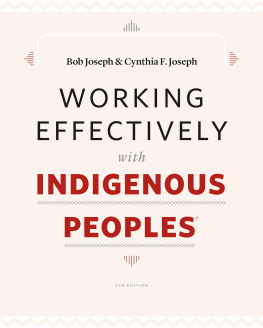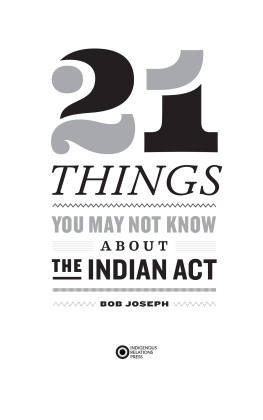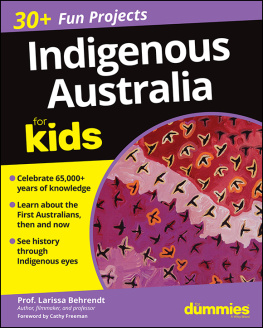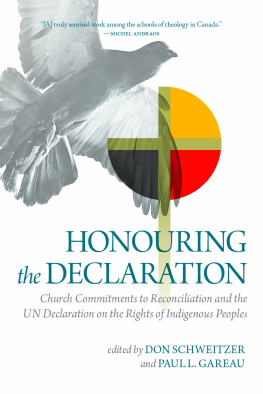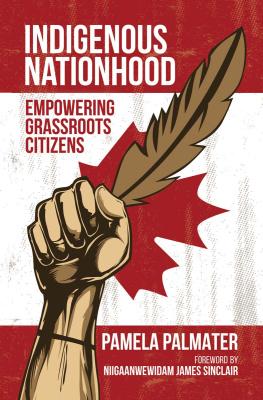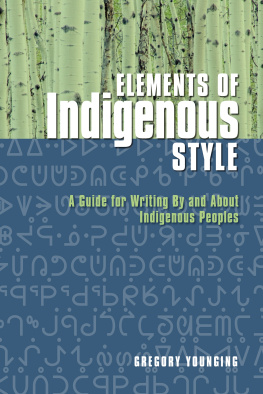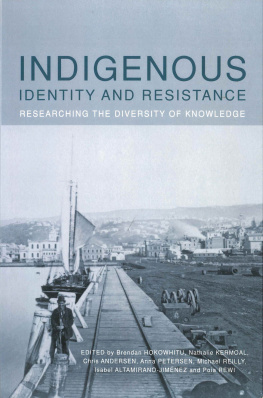Bob Joseph - Working Effectively with Indigenous Peoples®
Here you can read online Bob Joseph - Working Effectively with Indigenous Peoples® full text of the book (entire story) in english for free. Download pdf and epub, get meaning, cover and reviews about this ebook. year: 2017, publisher: Bob Joseph, genre: Politics. Description of the work, (preface) as well as reviews are available. Best literature library LitArk.com created for fans of good reading and offers a wide selection of genres:
Romance novel
Science fiction
Adventure
Detective
Science
History
Home and family
Prose
Art
Politics
Computer
Non-fiction
Religion
Business
Children
Humor
Choose a favorite category and find really read worthwhile books. Enjoy immersion in the world of imagination, feel the emotions of the characters or learn something new for yourself, make an fascinating discovery.
- Book:Working Effectively with Indigenous Peoples®
- Author:
- Publisher:Bob Joseph
- Genre:
- Year:2017
- Rating:5 / 5
- Favourites:Add to favourites
- Your mark:
Working Effectively with Indigenous Peoples®: summary, description and annotation
We offer to read an annotation, description, summary or preface (depends on what the author of the book "Working Effectively with Indigenous Peoples®" wrote himself). If you haven't found the necessary information about the book — write in the comments, we will try to find it.
Having recently completed training with Indigenous Corporate Training, Im pleased to see the materials and supporting information book updated to address the evolving nature of relationships, modern treaties, the evolving legal climate, and shifts in engagement and consultation activities when working with First Nations. Having taken this course years ago, the new material is valuable in understanding the evolution of First Nations application of rights and title cases across Canadas legal system. Christine Boehringer
Whether youre just starting out or want to increase your knowledge, Working Effectively with Indigenous Peoples is written to support people in their Indigenous relations endeavours. The fourth edition has additional content and a fresh look inside and out.
This book will provide readers with opportunities to:
- Understand the difference between Indigenous and Aboriginal
- Sift through the rhetoric to find creative solutions to workplace challenges
- Become familiar with terminology and interpersonal communications by learning what to say and what not to say to be respectful
- Learn business reasons for governments and organizations to work respectfully and effectively with Indigenous Peoples
- Explore individual and organizational strategies for Working Effectively with Indigenous Peoples
- Learn critical legal and practical information on consultation and accommodation
Bob Joseph, founder of Indigenous Corporate Training Inc., has provided training on Indigenous and Aboriginal relations since 1994. As a certified Master Trainer, Bob has assisted both individuals and organizations in building Indigenous or Aboriginal relations. His Canadian clients include all levels of government, Fortune 500 companies, financial institutions, including the World Bank, small and
medium-sized corporate enterprises, and Indigenous peoples. He has worked internationally for clients in the United States, Guatemala, Peru, and New Caledonia in the South Pacific. In 2006, Bob co-facilitated a worldwide Indigenous Peoples round table in Switzerland, which included participants from the United Nations, Australia, New Zealand, North, Central and South America, Africa, and the Philippines.
Bob Joseph is an Indigenous person, or more specifically a Status Indian, and is a member of the Gwawaenuk Nation. The Gwawaenuk is one of the many Kwakwakawakw tribes located between Comox and Port Hardy on Vancouver Island and the adjacent mainland of British Columbia. He comes from a proud potlatch family and is an initiated member of the Hamatsa Society. As the son of a hereditary chief, he will one day, in accordance with strict cultural laws, become a hereditary chief.
Cynthia F. Joseph is an integral part of the Indigenous Corporate Training Inc team. She is co-author of our books and is the main developer of the on-line training programs.
Cindy received her Bachelor of Laws degree from the University of British Columbia in 1990 and was called to the bar in 1991. She maintained a general law practice consecutively on the North Shore of Vancouver, Bowen Island, and Burnaby to retire from law in Port Coquitlam.
While maintaining a legal practice Cindy began using her experiences as a faculty member at Capilano University in the highly recognized Paralegal Program. The combination of her legal degree and her experience providing instruction in class, and in a virtual format have been invaluable in developing the online training programs that we offer. Cindys research skills and educational...
Bob Joseph: author's other books
Who wrote Working Effectively with Indigenous Peoples®? Find out the surname, the name of the author of the book and a list of all author's works by series.

